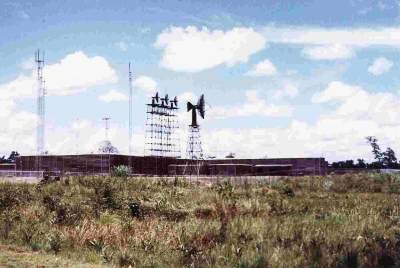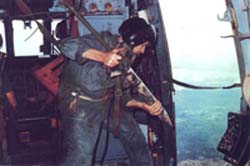
Home
FACs
More About FACs
The AO
A Shau Valley
• A Shau SF Camp
Hué
• MACV Compound
• LCU Ramp
• Hué Goose
Tet 1968
• Trail FACs
The Missions
Visual Recon
• Sunken Sampan
• Close Air Support
• Rules of Engagement
• TACS
• Battle at Hua Cu
Interdiction
• McNamara Line
• Choke Points
Ranch Hand
Arc Light
SAR
Hammer 51 Rescue
Search for Jolly 23
Jungle Penetrator
Legacies
Aircraft
O-2A
Glossary
Resources
Contact
Return to Top
|

| |
The McNamara Line

|
Infiltration Surveillance Center (ISC) at Nakhon Phanom RTAFB
(Image courtesy of Chris Jeppeson)
|

|
ADSID
|
In 1966 Secretary of Defense Robert S. McNamara issued guidance for the United States to design and build an electronic "wall" around
South Vietnam to remotely track the movement of supplies.
This effort was given the code name Igloo White.
This multi-billion dollar program involved the implantation and monitoring of remote electronic sensors all along the Ho Chi Minh
Trail to track vehicles and human movement through acoustic and seismic signatures.
Some of these monitoring devices, ADSIDs (Air Delivered Seismic Intrusion Detector), were inserted by helicopter or transport
aircraft, but in high-threat areas (Laos or the A Shau Valley) they usually were put in place by fighter aircraft.

|
Deploying ADSID by helicopter
(USAF photo)
|
In such cases a FAC was required to precisely locate and mark a specified set of coordinates so that the fighter could drop the
device accurately.
I flew one of the insertion support missions in A Shau Valley.
I was briefed on the general purpose of the mission and the importance of marking the target as precisely as possible just as the fighter rolled in.
It was not until years later that I was able to learn exactly what was being planted.
I spent about 30 minutes in the area in my 100 knot O-2 locating exactly where to place my marking rocket.
At the appointed time the F-4 came screaming through at about 400 knots.
He was over the target area for maybe 15 seconds. I never saw
anything come off the F-4.
Click here for an image of the pod used to dispense
ADSIDs from fighter aircraft.
One type of multiengine aircraft used to deploy these sensors was the OP-2E Neptune patrol bomber operated by the Navy and Army.
Click here for a photo of an ADSID being deployed from
an OP-2E.
A major challenge of the Igloo White project was collecting the electronic data from the sensors and forwarding it to the
Infiltration Surveillance Center (ISC) at Nakhon Phanom RTAFB.
Before the days of high-bandwidth satellites, relay aircraft were used to capture this information.
The first aircraft operated in this collection and relay effort was the EC-121R Super Constellation based at Korat RTAFB.
Because of the high operating cost of this large aircraft, the Air Force developed and deployed later in the war the Beechcraft QU-22, a highly modified Bonanza, to provide radio relay capability.
The "Q" prefix on the designation indicates that this aircraft originally was intended to be operated as a pilotless drone.
Operational tests proved this concept to be unsatisfactory, and the QU-22 was deployed as a manned aircraft and flown from Nakhon Phanom.
Click here for more on Project Igloo White (Air Force Magazine)
Click here for techical details on Project Igloo White (Chris Jeppeson)
|
|
Visual Reconnaissance
Interdiction
Close Air Support
|




